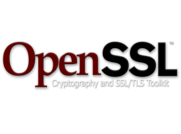0
Feds fine Verizon $3.4 million over 911 service outage issues
The U.S. Federal Communications Commission has fined Verizon US$3.4 million over its failure to notify police and fire departments during a 911 service outage last year.Under the commission’s rules, Verizon and other carriers were required to notify emergency call centers of a six-hour outage that occurred in April. The outage involved multiple carriers and affected over 11 million people in seven states.Verizon’s portion affected 750,000 California residents who were unable to call 911 to reach an emergency operator at 13 call centers in northern California. The outage was the result of a coding error at a large 911 routing center.To read this article in full or to leave a comment, please click here
 What sort of performance data do you need to make SDN decisions at the network edge?
What sort of performance data do you need to make SDN decisions at the network edge?
 Broadcom's non-Trident switch chips add a few high-end options.
Broadcom's non-Trident switch chips add a few high-end options.